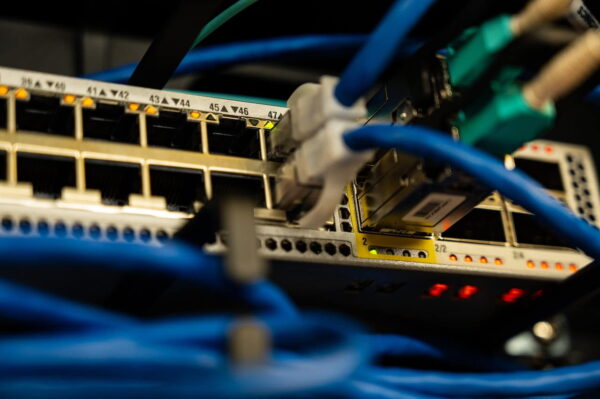✅ Last checked on
In today’s fast-paced digital landscape, a reliable home network is an absolute necessity. Whether you’re streaming movies, working from home, or gaming with friends, a well-optimized network setup can make all the difference.
In this article, we’ll delve into five expert tips that will guide you through creating an efficient home network setup.
From optimizing your router placement to securing your network, we’ve got you covered with practical insights and actionable advice.
Home Network Setup Tips: 5 Tips for an Efficient Setup

1. Choose the Right Router Placement
Your router’s placement plays a crucial role in determining the quality of your network signal. Position it centrally within your home to ensure even coverage across all areas. Avoid placing it near thick walls or metal objects that can obstruct the signal. Elevating the router can also enhance its range, so consider placing it on a shelf or mounting it on a wall.
2. Opt for Dual-Band or Tri-Band Routers
Investing in a dual-band or tri-band router can significantly improve your network’s performance. These routers operate on multiple frequencies, reducing congestion and interference. Utilize the 5 GHz band for high-bandwidth activities like streaming and gaming, while the 2.4 GHz band can handle everyday tasks. This separation ensures smoother performance across all devices.
3. Secure Your Network with a Strong Password
Protecting your network from unauthorized access is vital. Set a strong, unique password for both your router’s admin panel and Wi-Fi network. Avoid using easily guessable passwords and consider using a passphrase that combines letters, numbers, and symbols. Regularly update your password to maintain security.
4. Update Firmware Regularly
Router manufacturers often release firmware updates that address security vulnerabilities and enhance performance. Regularly check for updates through the router’s admin panel and install them promptly. These updates can optimize your network’s stability, security, and overall functionality.
5. Employ Quality of Service (QoS) Settings
Quality of Service (QoS) settings allow you to prioritize certain devices or types of traffic on your network. This is particularly useful if you have bandwidth-intensive activities competing for resources. By assigning higher priority to devices like gaming consoles or work computers, you ensure smooth performance for crucial tasks.
FAQs
How do I know if my router needs a firmware update?
Firmware update notifications are typically displayed within your router’s admin panel. Regularly check this panel for any available updates.
Can I use Wi-Fi extenders to improve network coverage?
Yes, Wi-Fi extenders can help expand your network’s reach, but they may also reduce overall speed. It’s better to position your router optimally and consider a mesh network for consistent coverage.
What is a mesh network, and how does it differ from a traditional network setup?
A mesh network utilizes multiple interconnected devices to create a seamless network across a larger area. Unlike traditional setups, mesh networks provide uniform coverage without dead spots.
Should I use the same network name and password for both 2.4 GHz and 5 GHz bands?
It’s recommended to use different names for each band to avoid confusion. This allows you to manually connect devices to the optimal frequency for their specific needs.
Can I limit my children’s internet usage using QoS settings?
Yes, QoS settings can be used to limit internet usage for specific devices or users, which is helpful for managing screen time and ensuring a balanced online experience.
What should I do if my network experiences frequent dropouts?
Network dropouts can be caused by various factors, including interference and outdated hardware. Start by troubleshooting the issue, such as adjusting router placement or updating firmware. If the problem persists, consider seeking professional help.
Conclusion
A seamless and efficient home network setup is well within your reach. By following these five expert tips, you can optimize your network for smooth connectivity, faster speeds, and an overall enhanced online experience.
Remember to choose the right router placement, consider dual-band or tri-band options, secure your network, stay updated with firmware, and leverage Quality of Service settings.
With these strategies in place, you’ll be well-equipped to enjoy all the benefits of a reliable and high-performance home network.